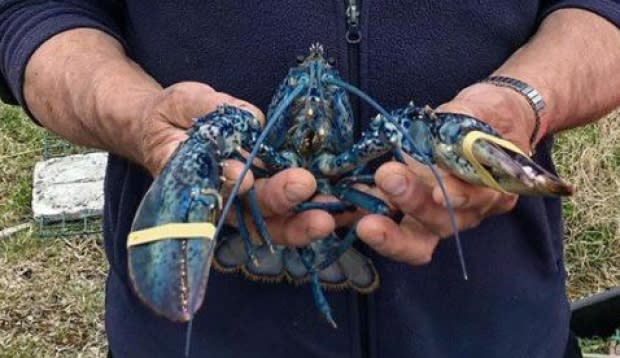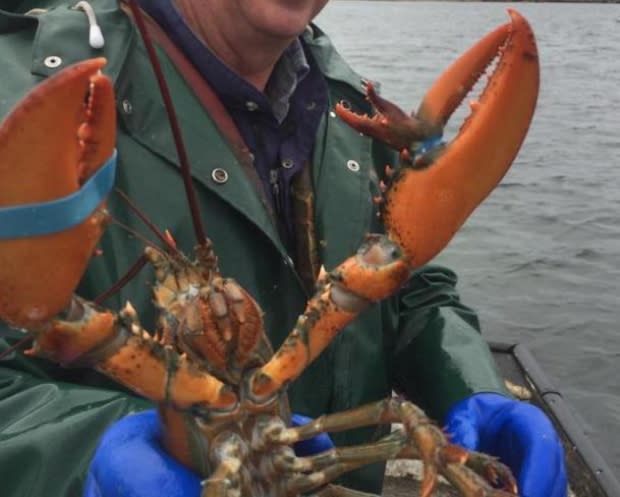Rare lobsters find their way into N.L. traps
Unusual lobsters emerging from Newfoundland and Labrador waters in recent weeks has led to two separate harvesters showing off their spoils, and prompting scientific explanations.
In Port au Choix, Bern Gaslard got a shock when he hauled a bright blue specimen from the sea.
Roy Burton of Greenspond found himself in possession of an even rarer find: a multi-clawed lobster, with a third, smaller set of pincers growing out of the "thumb" joint of one of the fully-formed claws.
Both catches are "more than likely a genetic mutation that's naturally occurring," explained Cyr Couturier, a researcher with the Marine Institute.
Different hues or extra appendages could be the result, he said, "when the DNA being replicated in the animal — and it happens to be the programming for cell growth or colouration — is a bit off."

These kinds of mutations, he added, appear rare, although he cautions it's difficult to estimate their numbers without in-depth scientific scrutiny.
That's because lobsters evolved their muddy, greenish-brown shells in accordance with the murky colour of their underwater environment. Lobsters that can hide from predators in plain sight, after all, are more likely to survive and reproduce, passing on their colouration genes, making blue or oddly-shaped ones simply less likely to stay alive until a harvester finds them.
Or so the theory goes.
Couturier pointed out that the fact these two captured specimens grew to maturity means their mutations probably didn't hinder their development.
"I would say it doesn't hinder them from obtaining food, nor does it hinder them from avoiding predators," he said.
What odds?
The probability of finding a blue-hued crustacean is about one in two million, according to Couturier. In terms of how many lobsters the province harvests each year, that translates into two or three such specimens annually.
Multi-clawed lobsters, however, are even rarer: only one in twenty million are thought to exist.
Despite the odds, "we've seen a number of lobsters like that in the last five or 10 years," Couturier says, with harvesters even pulling critters with up to six claws out of the water.

The Newfoundland and Labrador coast isn't the only area to encounter the mutant crustaceans. Further south, in 2016, a shipment of lobster from Nova Scotia yielded one with four claws, while a Prince Edward Island fisherman discovered a cobalt blue version a year later.
An albino lobster crawled its way into a New Brunswick trap in 2017 — a lobster so rare, experts told CBC News, it's probably easier to win the the lottery than find one.
But if the numbers don't wow you, Couturier said, there's no need to panic about missing out on a delicious meal.
"The only mutation, as far as we can tell, is in the pigment," he said.
"When you cook them, it doesn't matter if they're blue, green, yellow — they will turn red when you cook them, and they taste just the same as every other lobster."
Read more from CBC Newfoundland and Labrador


